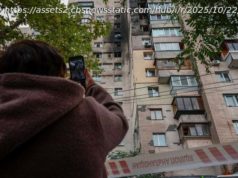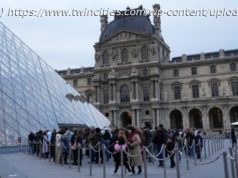Drought and abnormally dry conditions now cover 100 percent of California, up from 26 percent one year ago — making the state a literal tinderbox. The Camp Fire in Butte County is now ranked as one of the deadliest wildfires in U. S. history.
Drought and abnormally dry conditions now cover 100 percent of California, up from 26 percent one year ago — making the state a literal tinderbox. The Camp Fire in Butte County is now ranked as one of the deadliest wildfires in U. S. history.
Continued dry conditions in California led to the expansion of areas of Moderate Drought in the Sacramento Valley, extending to the western foothills of the northern Sierra Nevada. The dry conditions, along with strong winds, low humidity and almost no rainfall for months have exacerbated fire conditions.
As of 7 a.m. this morning, local time, fire crews recovered the remains of 74 people from the Camp Fire disaster zone, according to Cal Fire. Over 1,000 people are still missing. According to data compiled by Bloomberg, based on the number of deaths, this makes the Camp Fire the sixth deadliest wildfire in U. S. history.
According to Cal Fire, the Camp Fire has burned over 148,000 acres and is 55 percent contained, while the Woolsey Fire in southern California has burned 98,362 acres and is 82 percent contained. The fire destroyed 9,700 homes and has displaced over 52,000 residents.
U. S. Drought Monitor
Adding in statistics from the Woolsey Fire in southern California, where close to 90,000 acres have been burned, hundreds of homes destroyed and 250,000 people have been displaced, Market Watch reports that more than 23,000 homes were damaged by the two wildfires, representing roughly $8.6 billion in total reconstruction cost value.
Even though the risk of another wildfire breaking out at any time is high in California, across the U. S., almost 45 million homes “abut or intermingle” with wildland, according to the National Fire Protection Association in Quincy, Massachusetts.
A lesson from the past
A combination of wind, topography, drought, and ignition sources that create horrendous wildfires actually represent the conditions at the boundaries of human settlement with natural areas, like forest and other woodlands. There is even a name for this scenario — called the Peshtigo Paradigm.
Pestigo, Wisconsin. A bird’s eye view. «Destroyed by fire night of October 8th 1871.»
Library of Congress’s Geography & Map Division — I. D. Number g4124p.pm010495
On October 8,1871, a firestorm raged in the northern Wisconsin woods, killing upwards of 2,500 people and destroying 2,400 square miles — about 1.5 million acres of woods, farms, and villages, including the booming lumbering town of Peshtigo, just northwest of Green Bay. It was the deadliest wildfire in American history
The Peshtigo Fire is nothing more than a footnote in history because it occurred on the same day as the Great Chicago Fire of 1971 — and every schoolchild knows about that fire — based on the story of Mrs. O’Leary’s cow allegedly kicking over a lantern in the cowshed. (A reporter later admitted he had made up the story).
While historians disagree on the exact cause of the Peshtigo and Chicago fires, Fires also broke out in Holland and Manistee, Michigan (across Lake Michigan from Peshtigo), and Port Huron at the southern end of Lake Huron also had major fires. Using historical data from newspapers and written accounts of the fire by survivors, we do know something about what was happening in 1871.
The marker for the mass grave of victims of the Peshtigo Fire at the Peshtigo Fire Cemetery adjacent to the Peshtigo Fire Museum in Peshtigo, Wisconsin, USA. The charred remains of several hundred unidentifiable people were buried at this location. The fire was the deadliest in the history of the United States.
Royalbroil (talk| contribs)
Reconstruction of the weather map from 1871
Records have been analyzed — and it appears the Peshtigo Fire resulted from a number of factors, including prolonged drought, logging, and clearing of land for agriculture, local industry, and the ignorance and indifference of the population in heeding signs of the impending disaster.
It took a reanalysis (which covers the period from 1871-present) to see what was happening with the weather on a larger scale. Remember that climate science and weather forecasting was in its infancy over 100 years ago, and people were generally ignorant of signs that may have been obvious today.
A large upper-level ridge was present across the region from July through September, which would have set the stage for warm and potentially dry weather. A reanalysis of temperatures from July through September indicates above-normal temperatures were present from the central Plains into the upper Midwest.
University of Illinois
It was discovered that Fort Embarrass — about 60 miles southwest of Peshtigo, kept detailed weather records at that time. Information from daily meteorological observations made it possible to reconstruct a surface weather map of the U. S. on October 8,1871.
The Peshtigo Fire and other fires occurring on that day served as a wake-up call to many about the land use practices of the time. Timber from cleared land was discarded without regard to its potential to fuel wildfires. The subsequent 144 years has seen an evolution in how to mitigate wildfire potential with varying degrees of success, but awareness of the issue has dramatically increased.
Reconstruction of Surface Weather Map for October 8,1971.
University of Illinois
In any event, no external source of ignition was needed — numerous small fires from land-clearing operations and other causes were already burning in the area after a tinder-dry summer, generating so much smoke that the Green Island Light was kept lit 24 hours a day for weeks before the main fire.
All that was needed to generate the firestorm, as well as other fires in the Midwest, were the winds from the front that moved in that evening.






